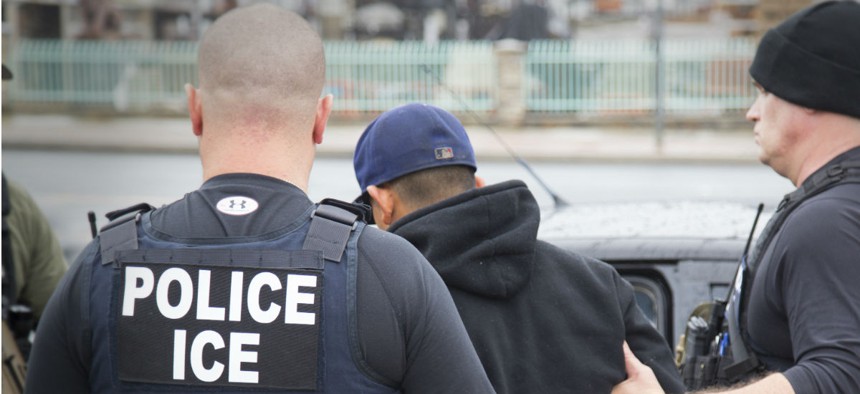ICE’s ‘Management Deficiencies’ Are Preventing It From Deporting More Immigrants
Trump wants 10,000 more ICE officers, but IG says the agency is failing those currently on the rolls.
President Trump has ordered a massive hiring surge to carry out a hallmark policy of deporting more undocumented immigrants, but a new report has found the agency he wants to staff up is failing to properly manage the employees it already has on board to carry out that task.
“Management deficiencies” at Immigration and Customs Enforcement have prevented the agency from removing as many immigrants as it otherwise could, the Homeland Security Department’s inspector general found, contributing to a large backlog of individuals with deportation orders who remain in the country. ICE is not properly training its deportation officers, tracking any data to determine the staffing levels it needs or assigning work on a logical basis, the IG concluded.
Still, Trump has called on ICE to add 10,000 employees to its workforce. The agency is developing a plan to meet that goal. DHS Secretary John Kelly recently told a Senate committee he did not yet know the “exact figures” for the number of people ICE would need to hire.
Deportation officers handling cases with immigrants not actively in ICE detention oversee between 1,500 and 10,000 individuals, the IG found. The workload of officers handling detained immigrants’ cases ranged from 65 to 110 individuals. ICE management said it had no reason for the gap. By failing to collect workload data, the IG said, ICE is creating uneven and arbitrary assignments, neglecting attainability in assigning responsibilities, and passing up the opportunity to learn lessons and best practices.
ICE supervised 2.2 million non-detained immigrants in fiscal 2015, about 368,000 of whom possessed criminal records. The agency removed 235,000 individuals that year.
Employees reported supervisors temporarily assigned them to other tasks and stations, further complicating their deportation work. Supervising a non-detained immigrant requires employees to conduct regular check-ins, conduct criminal background checks and coordinate with foreign countries’ embassies and consulates to facilitate repatriation. Officers reported only having time for scheduled appointments, which led to outdated immigrant criminal status information and lack of coordination on travel documentation.
The IG also found ICE has allowed its policies and procedures to fall out of date, with disparate updates handled informally. Employees reported “available policies and procedures did not help them properly manage their non-detained cases.” Records on immigrants were not reviewed and “likely inaccurate.” Additionally, ICE maintained no formal training program. It recently shifted 2,900 employees into deportation duties, and these employees were not properly trained, auditors found.
“These management deficiencies and unresolved obstacles make it difficult for ICE to deport aliens expeditiously,” the IG concluded. “ICE is almost certainly not deporting all the aliens who could be deported and will likely not be able to keep up with growing numbers of deportable aliens.”
ICE agreed with the issues the IG highlighted and agreed with the auditors’ recommendations to revise and update agency policies and procedures, conduct a comprehensive review of staffing allocations to determine proper workloads and workforce levels, standardize training and work with the State Department to streamline the deportation process. ICE said it is reviewing its workforce needs under Trump’s executive order and expects to have a plan in place by the end of January 2018.




